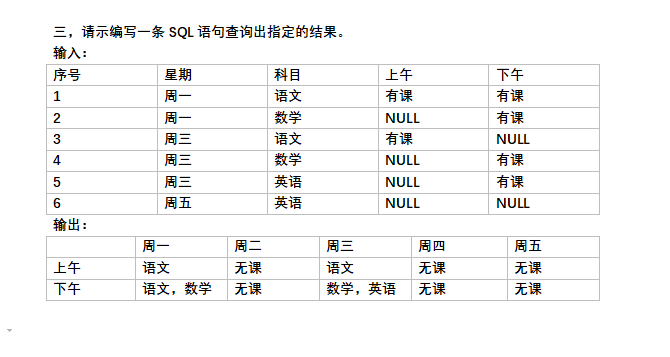I am new to Angular 2 without AngularJS experience and working on a tutorial involving the setting of an iframe src attribute:
<iframe width=\"100%\" height=\"300\" src=\"{{video.url}}\"></iframe>
This throws an exception:
Error: unsafe value used in a resource URL context
at DomSanitizationServiceImpl.sanitize...
I have already tried using bindings with [src] with no success. I am probably missing something and I have had a hard time finding a solution to this.
Update
For RC.6^ version use DomSanitizer
Plunker
And a good option is using pure pipe for that:
import { Pipe, PipeTransform } from \'@angular/core\';
import { DomSanitizer} from \'@angular/platform-browser\';
@Pipe({ name: \'safe\' })
export class SafePipe implements PipeTransform {
constructor(private sanitizer: DomSanitizer) {}
transform(url) {
return this.sanitizer.bypassSecurityTrustResourceUrl(url);
}
}
remember to add your new SafePipe to the declarations array of the AppModule. (as seen on documentation)
@NgModule({
declarations : [
...
SafePipe
],
})
html
<iframe width=\"100%\" height=\"300\" [src]=\"url | safe\"></iframe>
Plunker
If you use embed tag this might be interesting for you:
- how with angular2 rc.6 disable sanitize on embed html tag which display pdf
Old version RC.5
You can leverage DomSanitizationService like this:
export class YourComponent {
url: SafeResourceUrl;
constructor(sanitizer: DomSanitizationService) {
this.url = sanitizer.bypassSecurityTrustResourceUrl(\'your url\');
}
}
And then bind to url in your template:
<iframe width=\"100%\" height=\"300\" [src]=\"url\"></iframe>
Don\'t forget to add the following imports:
import { SafeResourceUrl, DomSanitizationService } from \'@angular/platform-browser\';
Plunker sample
This one works for me.
import { Component,Input,OnInit} from \'@angular/core\';
import {DomSanitizer,SafeResourceUrl,} from \'@angular/platform-browser\';
@Component({
moduleId: module.id,
selector: \'player\',
templateUrl: \'./player.component.html\',
styleUrls:[\'./player.component.scss\'],
})
export class PlayerComponent implements OnInit{
@Input()
id:string;
url: SafeResourceUrl;
constructor (public sanitizer:DomSanitizer) {
}
ngOnInit() {
this.url = this.sanitizer.bypassSecurityTrustResourceUrl(this.id);
}
}
This works me to Angular 5.2.0
sarasa.Component.ts
import { Component, OnInit, Input } from \'@angular/core\';
import { DomSanitizer, SafeResourceUrl } from \'@angular/platform-browser\';
@Component({
selector: \'app-sarasa\',
templateUrl: \'./sarasa.component.html\',
styleUrls: [\'./sarasa.component.scss\']
})
export class Sarasa implements OnInit {
@Input()
url: string = \"https://www.mmlpqtpkasjdashdjahd.com\";
urlSafe: SafeResourceUrl;
constructor(public sanitizer: DomSanitizer) { }
ngOnInit() {
this.urlSafe= this.sanitizer.bypassSecurityTrustResourceUrl(this.url);
}
}
sarasa.Component.html
<iframe width=\"100%\" height=\"100%\" frameBorder=\"0\" [src]=\"urlSafe\"></iframe>
thats all folks!!!
constructor(
public sanitizer: DomSanitizer, ) {
}
I had been struggling for 4 hours. the problem was in img tag. When you use square bracket to \'src\' ex: [src]. you can not use this angular expression {{}}. you just give directly from an object example below. if you give angular expression {{}}. you will get interpolation error.
first i used ngFor to iterate the countries
*ngFor=\"let country of countries\"
second you put this in the img tag. this is it.
<img [src]=\"sanitizer.bypassSecurityTrustResourceUrl(country.flag)\"
height=\"20\" width=\"20\" alt=\"\"/>
I usually add separate safe pipe reusable component as following
# Add Safe Pipe
import { Pipe, PipeTransform } from \'@angular/core\';
import { DomSanitizer } from \'@angular/platform-browser\';
@Pipe({name: \'mySafe\'})
export class SafePipe implements PipeTransform {
constructor(private sanitizer: DomSanitizer) {
}
public transform(url) {
return this.sanitizer.bypassSecurityTrustResourceUrl(url);
}
}
# then create shared pipe module as following
import { NgModule } from \'@angular/core\';
import { SafePipe } from \'./safe.pipe\';
@NgModule({
declarations: [
SafePipe
],
exports: [
SafePipe
]
})
export class SharedPipesModule {
}
# import shared pipe module in your native module
@NgModule({
declarations: [],
imports: [
SharedPipesModule,
],
})
export class SupportModule {
}
<!-------------------
call your url (`trustedUrl` for me) and add `mySafe` as defined in Safe Pipe
---------------->
<div class=\"container-fluid\" *ngIf=\"trustedUrl\">
<iframe [src]=\"trustedUrl | mySafe\" align=\"middle\" width=\"100%\" height=\"800\" frameborder=\"0\"></iframe>
</div>
Congratulation ! ¨^^
I have an easy & efficient solution for you, yes!
<iframe width=\"100%\" height=\"300\" [attr.src]=\"video.url\"></iframe
[attr.src] instead of src
\"video.url\" and not {{video.url}}
Great ;)


